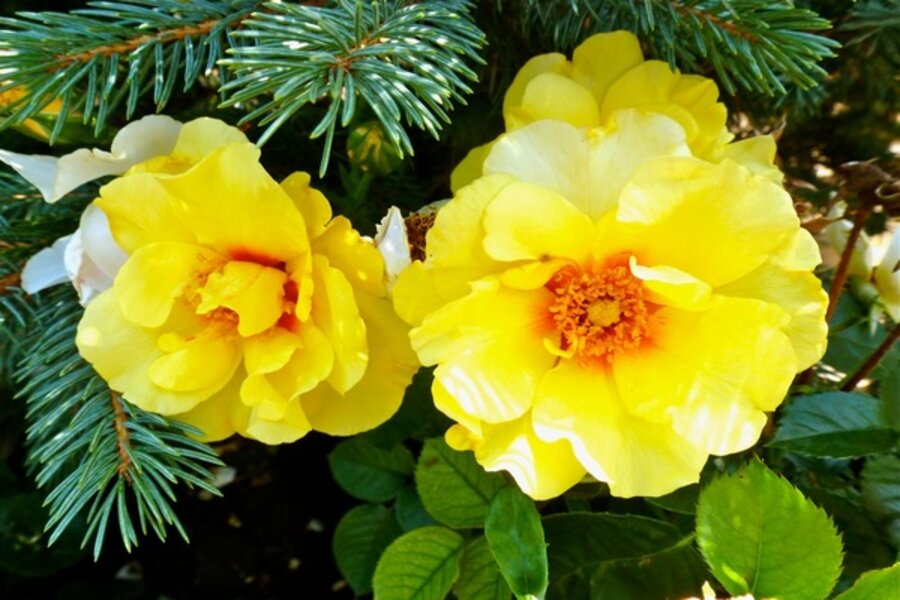A closer look at the new Eyeconic roses
There is no way to predict when a hybridizing bug may bite its victims.
Eight-year-old schoolboy David Austin wished to create a new flower like the world had never seen.
Twenty-something Bill Radler hoped to breed a rose that didn’t require constant pampering. His Knock Out filled the bill.
Jim Sproul enjoyed breeding guppies in his early teens; then, as an adult, his hybridizing interests turned to roses.
Over the past15 years he has been working to create a line of roses bred with Hulthemias, plants considered more of a weed than an ornamental in the desert regions of Iran and Afghanistan.
Although Hulthemias (Rosa persica) are described as ugly bushes with thorny, rambling branches, the flowers have a distinctive red blotch in the center that has fascinated hybridizers for decades.
Much work to create a blotch
They are not true roses, but breeders hoped they could cross the once-blooming desert plant with the modern Queen of Flowers to produce new varieties with the fascinating blotch.
The pioneering efforts of breeders around the world including Peter James, Chris Warner, Jack Harkness, and Ralph Moore paved the way for Jim Sproul’s breakthrough work.
The Eyeconic roses are Dr. Sproul’s reward after many years of trial and error, success, and failure, and many hundreds of crosses.
His first big introduction was Eyeconic Lemonade, a shrub with sunny yellow, gently ruffled blooms that have a magenta-red blotch at the base. Lemonade is a heavy bloomer with slightly scented, non-fading flowers.
Pink Lemonade soon followed – a pretty light pink with a frilly bloom and, of course, the blotch. Both varieties grow to about 3 feet tall and boast dark green glossy foliage.
This year brings two new members of the family to catalogs and nurseries.
Landscape shrub Eyeconic Melon Lemonade is orange to apricot in color with a red ring around the inside of the petals.
Eyeconic Pomegranate Lemonade is a miniature – a deep pink and white blend with a dark magenta eye. It features exceptionally large non-fading flowers on a bush growing only to about 12 inches high. Pomegranate also has the best blotch of the bunch thus far.
Semi-double Eyeconic Lychee Lemonade (making its debut in 2014) is a pleasing ivory cream with a deep burgundy blotch. The plant is vigorous yet compact, making it a good choice for containers and small gardens.
May be best in the West
All of these roses are fuss-free, self-cleaning, and are well suited for the Western United States and Canada.
However in the East and South, Eyeconic Lemonade and Pink Lemonade may require spraying because they are reportedly susceptible to black spot.
I don’t know if the black spot warning is for real or just cautionary.
In any event, I’ll be keeping my eye on them all and let you know.
-----
Lynn Hunt, the Rose Whisperer blogs regularly at Diggin' It. She's an accredited horticultural judge and a Consulting Rosarian Emeritus for the American Rose Society. She has won dozens of awards for her writing in newspapers, magazines, and television. After a recent move, she grows roses and other plants in her garden in the mountains of western North Carolina. To read more by Lynn here at the Monitor, click here.You can also follow her on Twitter and read her Dirt Diaries






